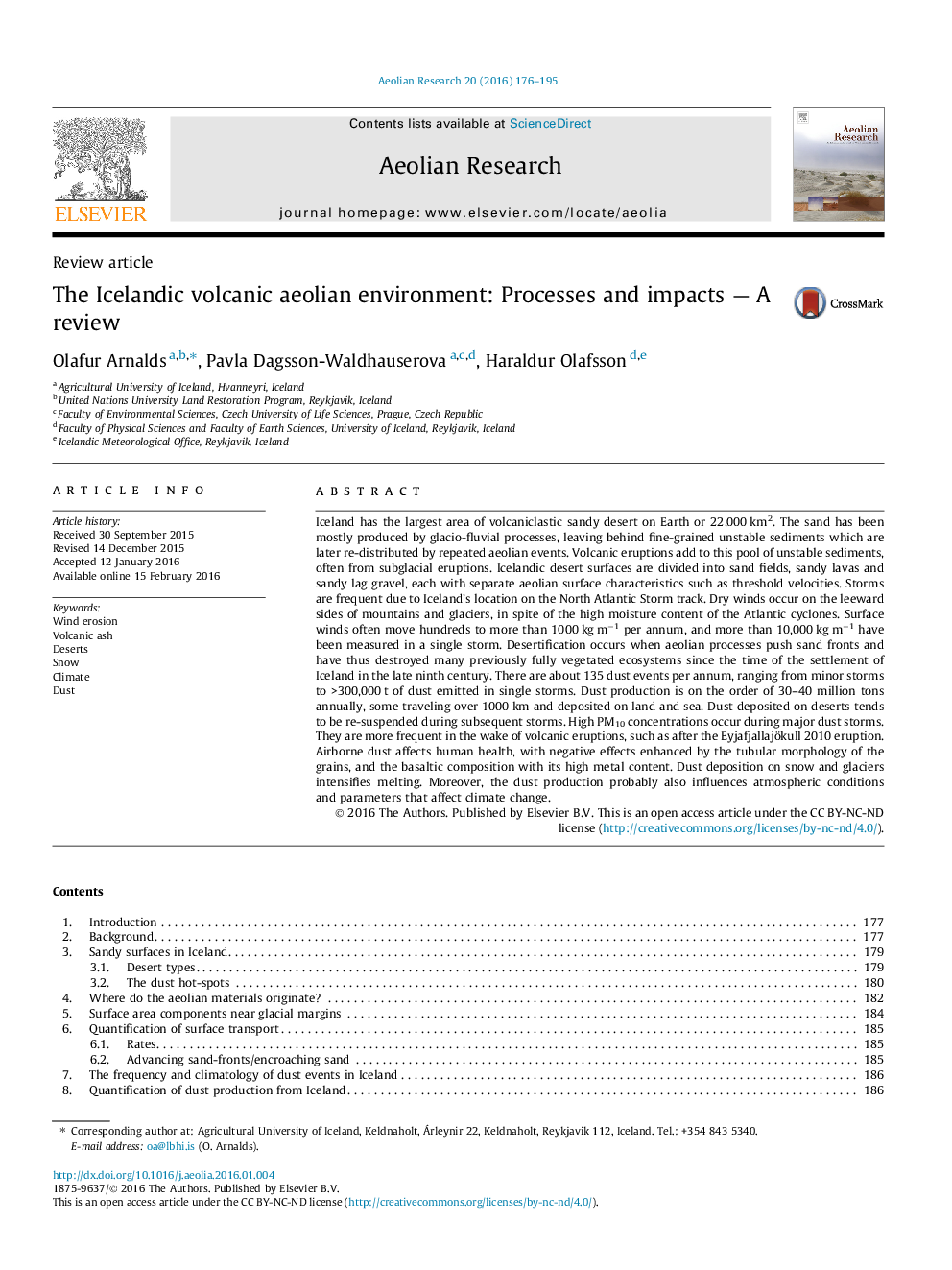| کد مقاله | کد نشریه | سال انتشار | مقاله انگلیسی | نسخه تمام متن |
|---|---|---|---|---|
| 6426243 | 1634108 | 2016 | 20 صفحه PDF | دانلود رایگان |
- Iceland has about 15,000Â km2 of active sandy deserts which consist of volcanic materials.
- Most active aeolian sources are unstable glacio-fluvial sediments and volcanic ash deposits on deserts.
- Iceland is among the most active dust sources on Earth.
- Dust deposition is a major factor shaping Icelandic ecosystems.
- Icelandic dust has a far-reaching impact on glaciers, atmospheric conditions, oceans and human health.
Iceland has the largest area of volcaniclastic sandy desert on Earth or 22,000 km2. The sand has been mostly produced by glacio-fluvial processes, leaving behind fine-grained unstable sediments which are later re-distributed by repeated aeolian events. Volcanic eruptions add to this pool of unstable sediments, often from subglacial eruptions. Icelandic desert surfaces are divided into sand fields, sandy lavas and sandy lag gravel, each with separate aeolian surface characteristics such as threshold velocities. Storms are frequent due to Iceland's location on the North Atlantic Storm track. Dry winds occur on the leeward sides of mountains and glaciers, in spite of the high moisture content of the Atlantic cyclones. Surface winds often move hundreds to more than 1000 kg mâ1 per annum, and more than 10,000 kg mâ1 have been measured in a single storm. Desertification occurs when aeolian processes push sand fronts and have thus destroyed many previously fully vegetated ecosystems since the time of the settlement of Iceland in the late ninth century. There are about 135 dust events per annum, ranging from minor storms to >300,000 t of dust emitted in single storms. Dust production is on the order of 30-40 million tons annually, some traveling over 1000 km and deposited on land and sea. Dust deposited on deserts tends to be re-suspended during subsequent storms. High PM10 concentrations occur during major dust storms. They are more frequent in the wake of volcanic eruptions, such as after the Eyjafjallajökull 2010 eruption. Airborne dust affects human health, with negative effects enhanced by the tubular morphology of the grains, and the basaltic composition with its high metal content. Dust deposition on snow and glaciers intensifies melting. Moreover, the dust production probably also influences atmospheric conditions and parameters that affect climate change.
Journal: Aeolian Research - Volume 20, March 2016, Pages 176-195
